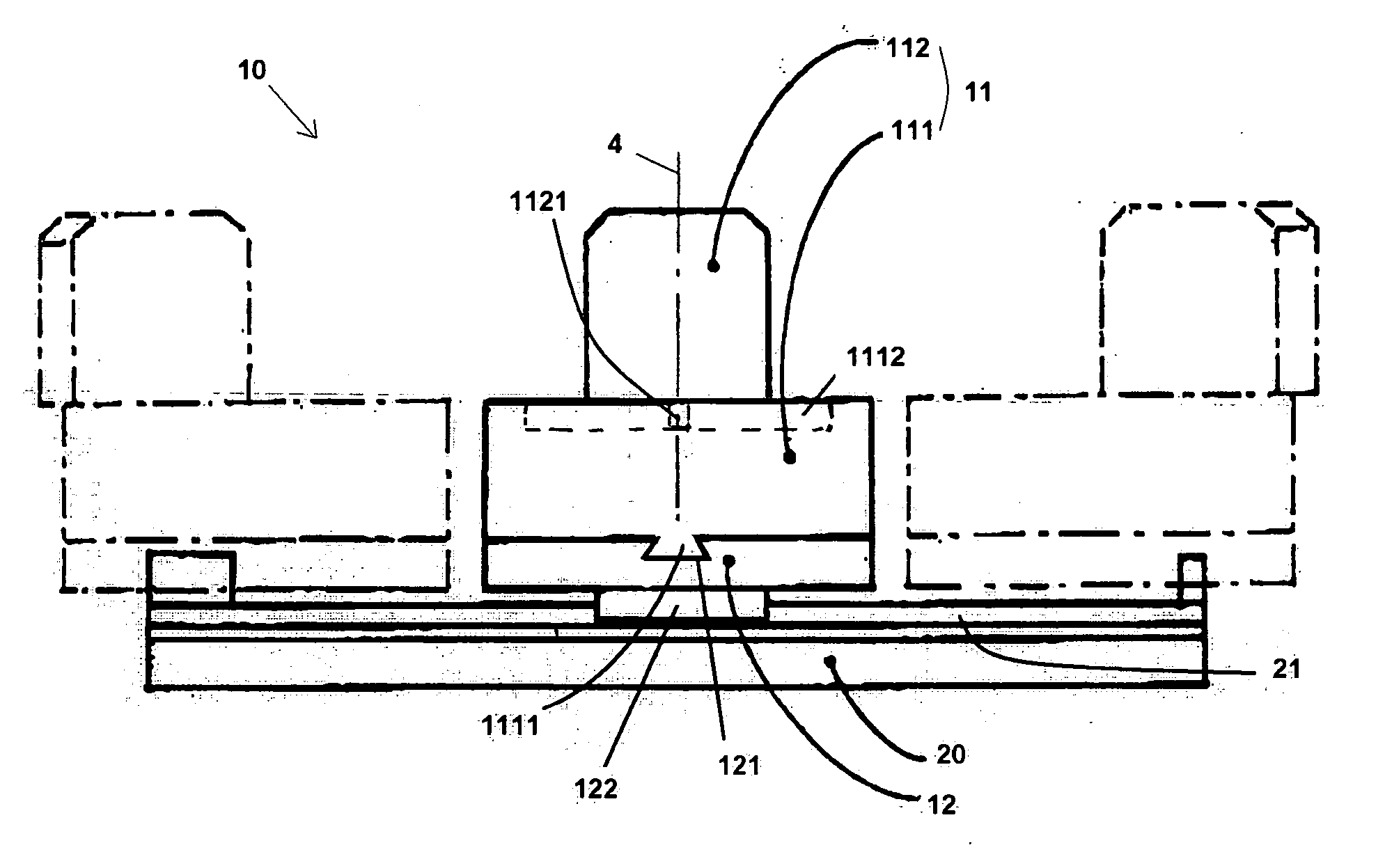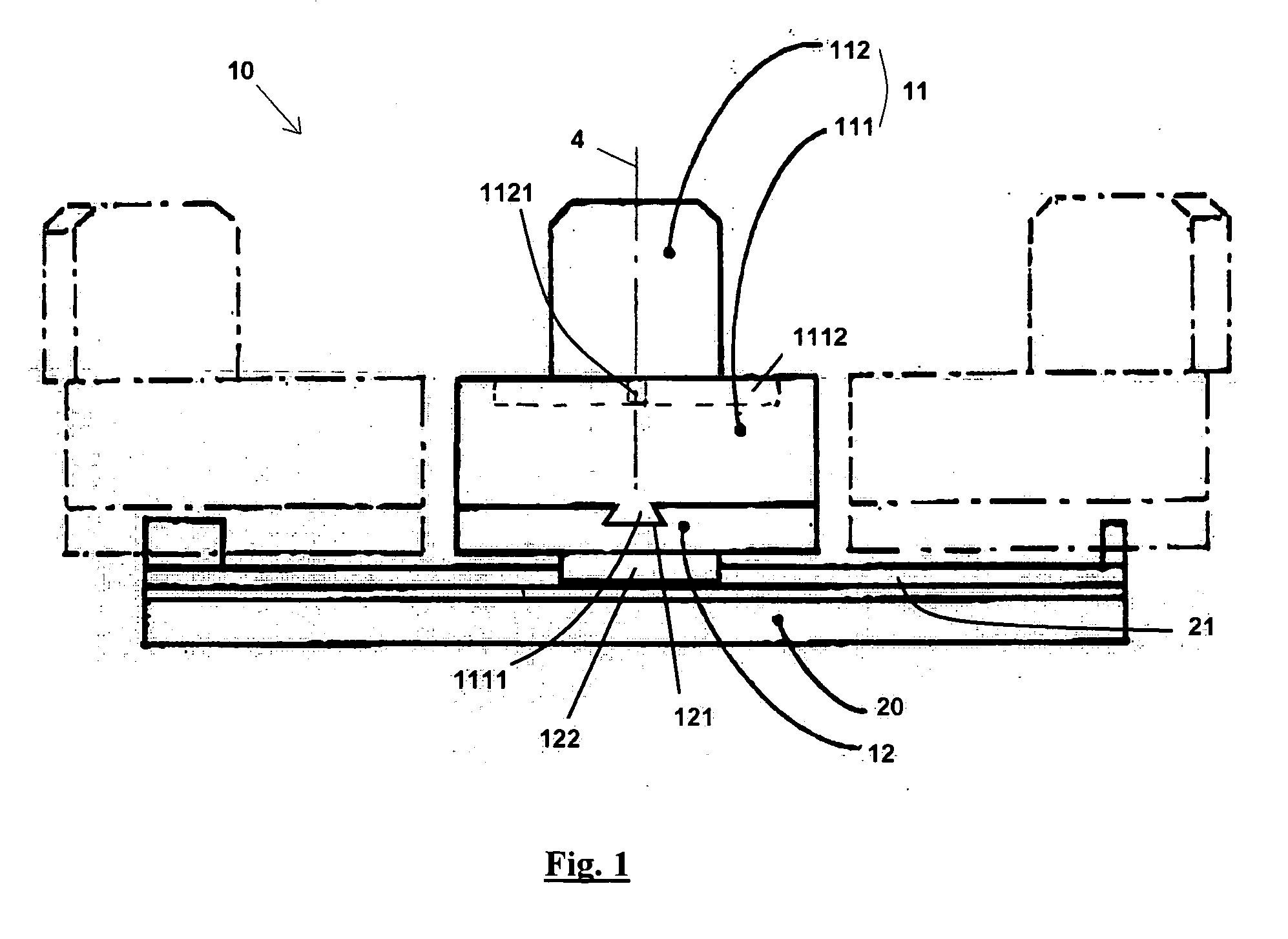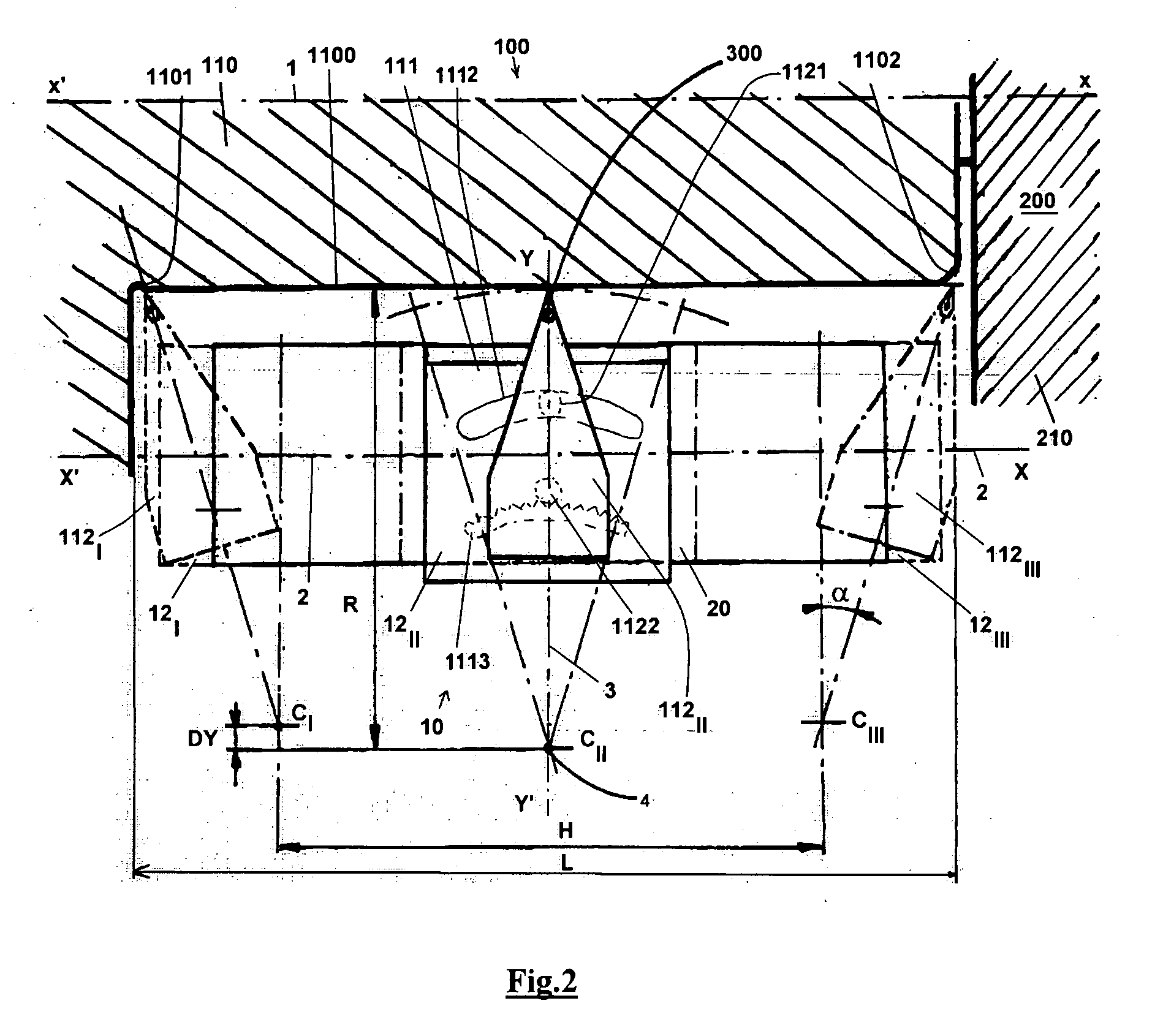Process for machining in situ the peripheral surface of a rotating part, and apparatus for carrying out said process
a technology for rotating parts and peripheral surfaces, which is applied in the direction of metal-working holders, positioning devices, support devices, etc., can solve the problems of immobilisation of the motor for a long period, high cost of repair, and the inability to rotate contacts in a uniform radius around their entire periphery, etc., and achieve the effect of smooth plate movemen
- Summary
- Abstract
- Description
- Claims
- Application Information
AI Technical Summary
Benefits of technology
Problems solved by technology
Method used
Image
Examples
Embodiment Construction
[0041] Figures
[0042]FIG. 1 illustrates a front view and FIG. 2 illustrates a top view of a machining device according to the invention used for in situ resurfacing of the surface of rotating contacts of electrical motors, with the extreme spatial configurations of the plate and tool holder shown in chain dotted lines.
[0043] The machining device shown in this example includes two parts: a base (20) fixed to the frame of the motor (not shown) and a plate+tool holder assembly (10). The tool holder (11) is fitted at its end with a hard machining tip (300), typically greater than 10 on the Mohs scale, for example made of diamond. The tool holder comprises two parts free to move with respect to each other: [0044] a base (111) that can displace along YY′ and is provided with a gear (1113) moving around the arc of a circle in a plane parallel to (XX′, YY′) and a groove (1112) in the form of an arc of a circle concentric to the arc of circle in the gear; [0045] an insert holder (112) that h...
PUM
| Property | Measurement | Unit |
|---|---|---|
| Fraction | aaaaa | aaaaa |
| Angle | aaaaa | aaaaa |
| Diameter | aaaaa | aaaaa |
Abstract
Description
Claims
Application Information
 Login to View More
Login to View More - R&D
- Intellectual Property
- Life Sciences
- Materials
- Tech Scout
- Unparalleled Data Quality
- Higher Quality Content
- 60% Fewer Hallucinations
Browse by: Latest US Patents, China's latest patents, Technical Efficacy Thesaurus, Application Domain, Technology Topic, Popular Technical Reports.
© 2025 PatSnap. All rights reserved.Legal|Privacy policy|Modern Slavery Act Transparency Statement|Sitemap|About US| Contact US: help@patsnap.com



